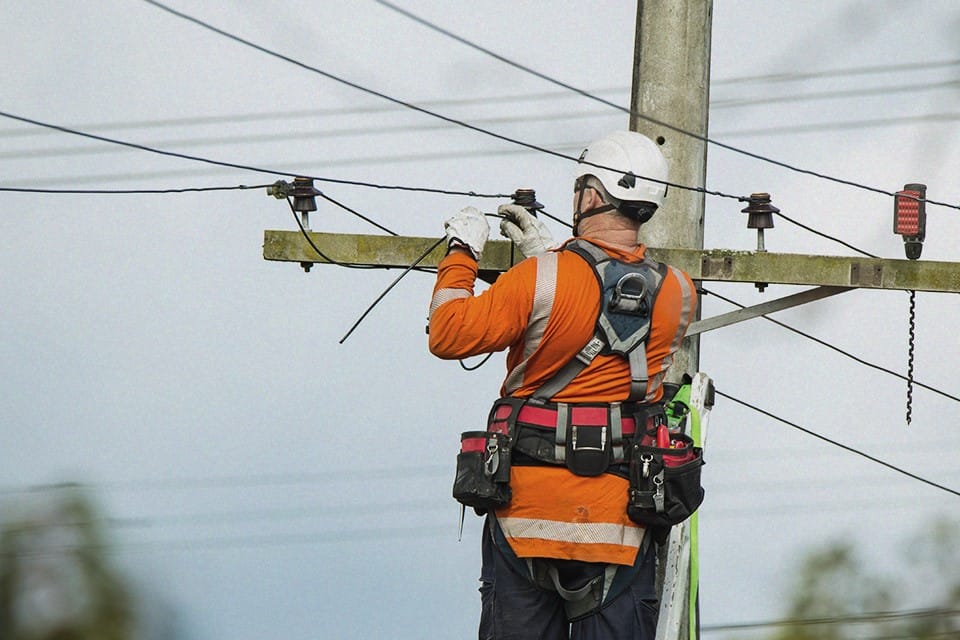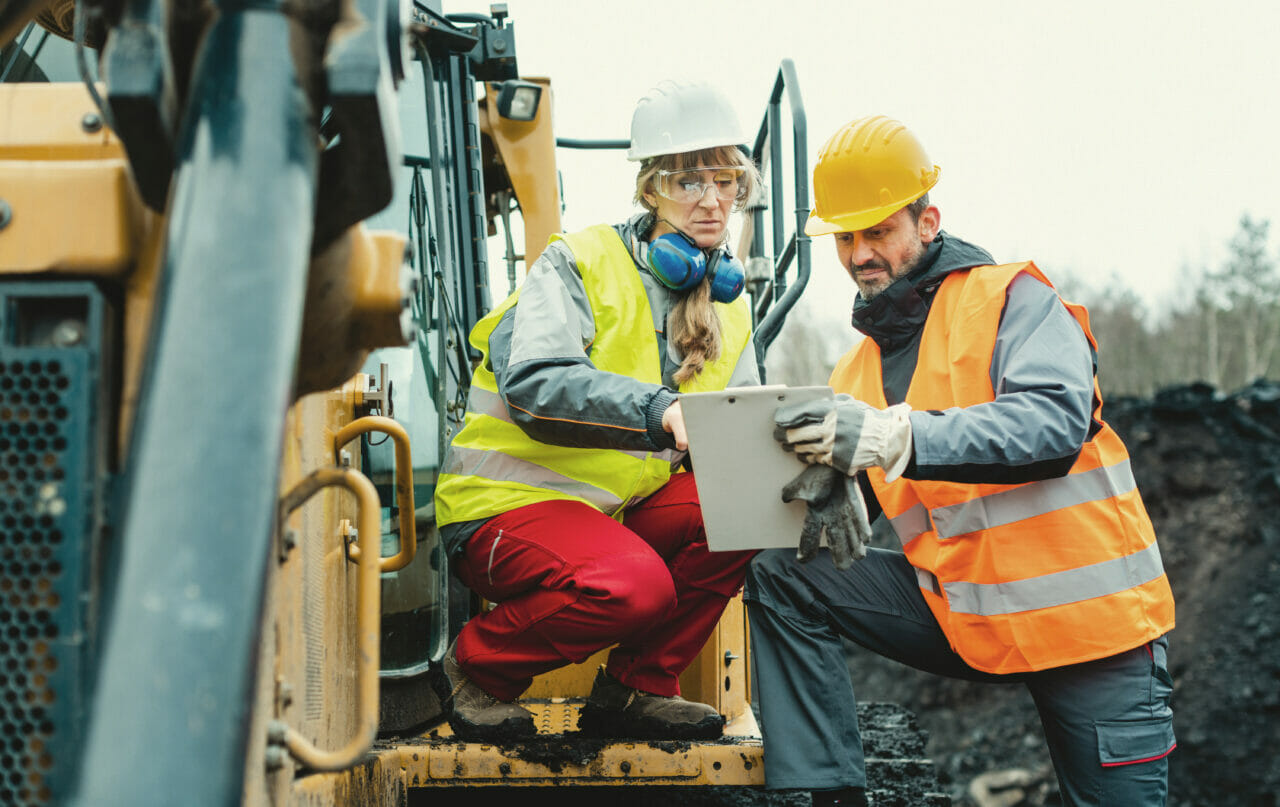
Municipal Utilities: Top Safety and Compliance Concerns

Workers in municipal utilities face a host of safety hazards every day. Those risks, such as working with high-voltage electricity or navigating confined spaces, are very real and sometimes highly dangerous.
Furthermore, the utilities industry is subject to various compliance requirements that compound the challenges of navigating these worksite dangers. The pressure of strict regulations and standards makes every worker’s job in these high-hazard environments even more demanding.
Keeping these essential workers safe and compliant is critical to ensuring these facilities run smoothly and serve their surrounding communities properly. However, this can prove challenging, especially if a municipality is unaware of what safety and compliance risks it might face.
To help them jumpstart a risk mitigation plan, this article explores some of municipal utilities’ top safety and compliance concerns.
Top Safety Concerns for Municipal Utilities
There are countless ways that things can go wrong for municipal utility workers. And when they do, the consequences can be devastating. Those dangers include but are not limited to the following:
High-Voltage Electricity
One of the biggest safety concerns is working with high-voltage electricity. A single mistake can lead to electrocution or severe burn, and it is crucial that workers have proper training and equipment to handle these risks.
Confined Spaces
Another major hazard is confined spaces, such as the following:
- Manholes
- Sewers
- Underground vaults
- Tunnels
These tight, poorly ventilated areas can quickly become deadly if workers are exposed to toxic gases or lack of oxygen. Specialized training and safety gear are a must.
Falls
Workers in municipal utilities also face fall hazards from various structures and equipment, including the following:
- Scaffolding
- Ladders
- Trench walls
- Roofs
- Uneven terrain
One wrong step can lead to serious injuries or even fatalities. Proper fall protection equipment and training are essential.
Traffic Hazards
Many municipal utility jobs involve working in or near traffic, which poses a significant safety risk. Workers can be struck by passing vehicles or equipment if proper precautions aren’t taken.
High-visibility clothing, warning signs, and flaggers are essential to keep workers safe in these situations. Employers must also ensure that work zones are properly set up and supported to minimize risks.
Hazardous Materials
Municipal utility workers often encounter hazardous materials like:
- Lead
- Mercury
- PCB’s (Polychlorinated Biphenyls)
- Asbestos
Exposure to these substances can cause long-term health problems, so employers must provide proper protective equipment and follow strict safety protocols to minimize these risks.
Regular safety training is also crucial to ensure workers know how to handle these materials safely.
The bottom line is that safety must always be the top priority in the municipal utilities industry. Lives are on the line every day, and there’s no room for error.
Employers are responsible for providing a safe work environment, proper training, and adequate equipment. And workers must also do their part by following safety protocols and speaking up when they see potential hazards.
Top Compliance Concerns for Municipal Utilities
Municipal Utility regulations are complex, ever-changing, and critical to get right.
Not complying with these rules can lead to hefty fines, legal troubles, and even criminal charges. It’s not just about avoiding penalties but protecting public health and safety.
One of their biggest compliance challenges is staying on top of various agencies’ different regulations. There are countless rules to follow, from the Environmental Protection Agency (EPA) to the Occupational Safety and Health Administration (OSHA) to state and local authorities.
Trying to keep track of all the requirements can be overwhelming, especially as they constantly evolve. That’s why having a dedicated compliance team and robust training programs is so important.
Two major compliance concerns are as follows:
Environmental Regulations
Municipal utilities significantly affect the environment, from water treatment to waste management. As a result, they face a host of environmental regulations designed to minimize pollution and protect natural resources.
Major federal laws they must follow include:
- Clean Water Act
- Clean Air Act
- Safe Drinking Water Act
These regulations cover everything from water quality standards to emissions limits to hazardous waste disposal. Staying in compliance requires careful monitoring, testing, and reporting.
Municipalities must constantly assess their operations to identify potential issues and take corrective action. It’s a never-ending process that requires vigilance and dedication.
Workplace Safety Compliance
In addition to environmental regulations, municipal utilities must also follow workplace safety rules set by OSHA. These standards cover a wide range of hazards, from electrical safety to confined spaces to hazardous materials, as discussed earlier.
Following OSHA regulations involves taking certain measures, including but not limited to the following:
- Providing the proper training
- Conducting worksite inspections
- Proving the best equipment
- Establishing safety protocols
- Encouraging open communication
The consequences of non-compliance can be severe, including fines, legal liability, and even criminal charges in cases of willful violations.
But more importantly, not prioritizing safety puts workers’ lives at risk. At the end of the day, compliance is about more than just avoiding penalties. It’s about fulfilling a responsibility to protect public health, safety, and the environment.
Municipal utility providers have a duty to serve their communities with integrity and accountability. That means going above and beyond to meet or exceed all applicable regulations, no matter how challenging. It’s not always easy, but it’s absolutely essential.
Addressing These Concerns Requires the Industry’s Best Safety and Compliance Solutions
Municipal utilities are critical parts of our communities, and the safety of their workers is paramount. By understanding the top safety hazards and compliance challenges, safety leaders can take proactive steps to mitigate risks and create a safer working environment.
However, identifying potential safety and compliance dangers is only the first step. Your utility needs a safety and compliance program that addresses the unique challenges that municipalities and other governmental entities face.
Consider working with us to configure a solution that helps you improve worksite safety, maintain compliance, and continue servicing your surrounding community.
Contact us today to learn more.




